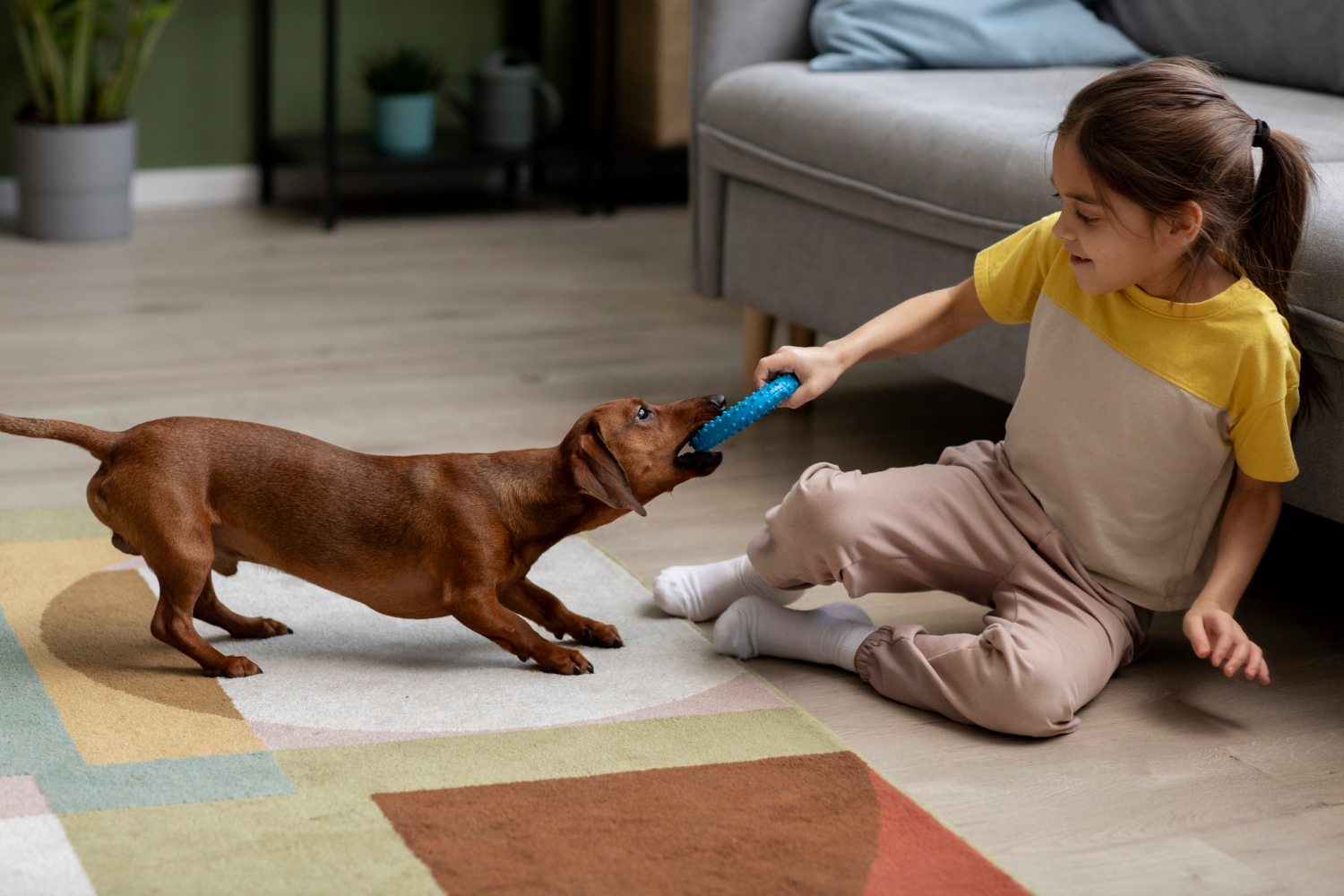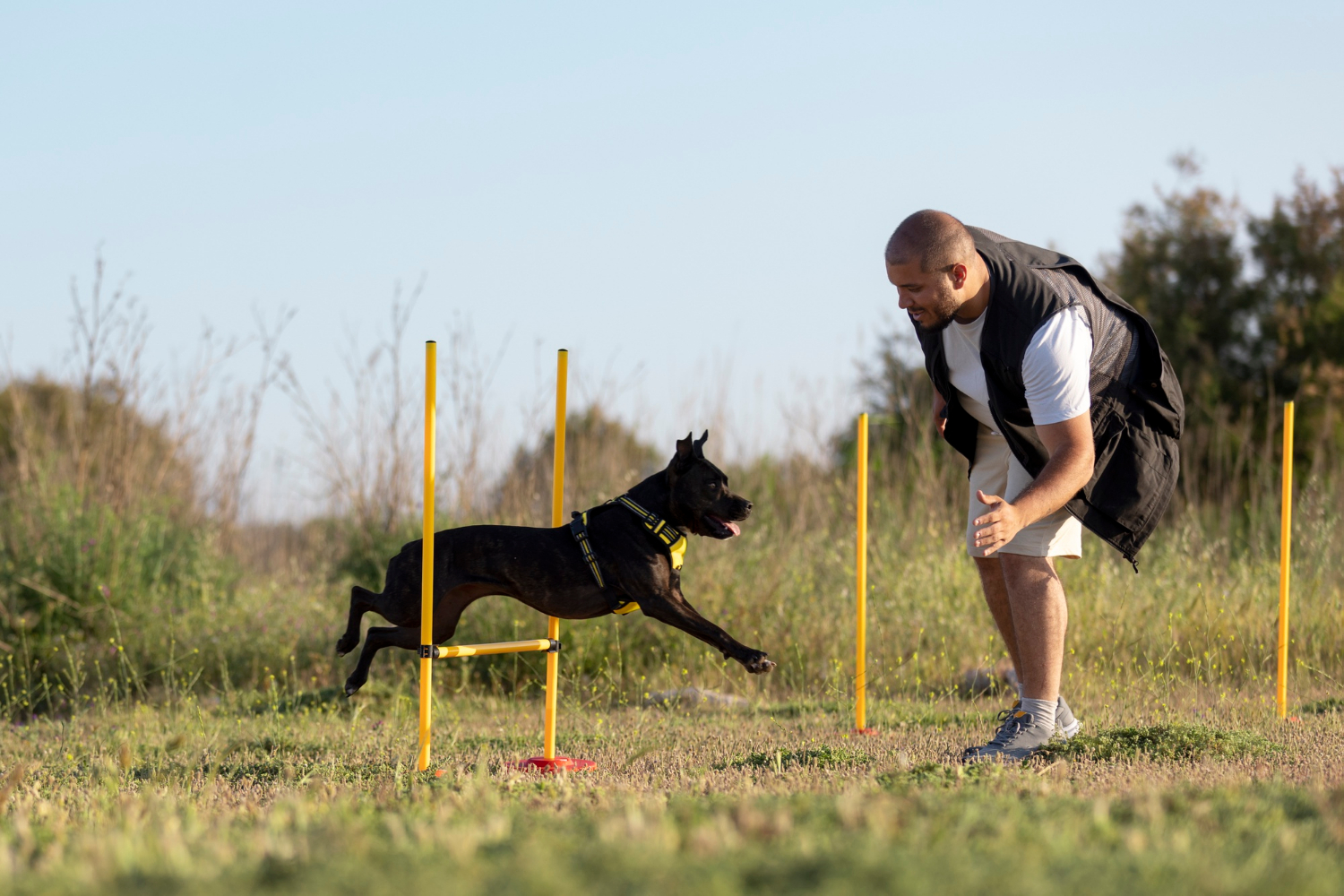
If our furry companions could vocalize their feelings, they might frequently express, “I’m bored.” However, since they can’t, they resort to behaviors like chewing furniture and causing mischief. To prevent such antics, it’s essential to provide dogs with mental stimulation. Keeping their brains active is key to ensuring their contentment and tranquility, which in turn delights their human counterparts. For younger pups, there are numerous engaging brain training for dogs tailored to provide mental stimulation.
Encourage Work for Food
A simple yet effective method to keep your dog mentally engaged is to make them work for their meals. This can involve basic commands like sitting or lying down before placing their food bowl or scattering small bits of kibble around the house for them to discover. Additionally, puzzle feeders are available, designed to challenge your dog’s problem-solving abilities.
One way to take this a step further is by incorporating feeding into interactive games. For instance, you can use treat-dispensing toys or food puzzles that require the dog to manipulate objects to access their meal. These activities not only provide mental stimulation but also slow down eating, which can be beneficial for digestion and weight management.
1.Allow Sniffing & Exploration During Walks
One of the best ways to engage your dog’s brain is by allowing them to sniff during walks. Sniffing is a natural behavior that helps dogs engage their minds and expend energy. Permit your dog to stop and sniff as much as they desire during walks, and consider rewarding them with treats to reinforce this behavior.
In addition to allowing sniffing, you can introduce structured scent work activities during walks. This can involve teaching your dog to search for specific scents or objects hidden along the walking route. Scent work not only provides mental stimulation but also taps into your dog’s natural instincts and enhances their bond with you as their handler.
2. Introduce Puzzle Toys
Puzzle toys provide excellent mental stimulation for dogs, encouraging them to think and problem-solve. These toys come in various designs to suit different dogs’ personalities and needs. For instance, the Dogsee Play Treatoy can be filled with treats or kibble, motivating your dog to work to retrieve the food.
Expanding on this, you can create DIY puzzle toys using household items. For example, you can place treats inside empty cardboard boxes or plastic bottles and encourage your dog to figure out how to access the treats. You can also hide toys or treats in different locations around the house and encourage your dog to search for them using their nose.
3.Teach New Tricks
Contrary to the saying, old dogs can indeed learn new tricks with patience and creativity. Teaching your dog new tricks not only keeps their mind active but also strengthens the bond between you. Consider activities like retrieving items, creating obstacle courses, playing tug-of-war (especially for multiple dogs), or teaching basic commands like sit, stay, and come.
To expand on this, you can incorporate training sessions into your daily routine. Dedicate short periods of time each day to teach your dog a new trick or reinforce existing commands. Use positive reinforcement techniques such as treats, praise, and play to motivate your dog and make the training sessions enjoyable for both of you.
4.Engage in Nose Work Games
Nose work games tap into your dog’s natural instincts and provide mental stimulation. Hide treats around the house for your dog to find, or create scent trails using items with strong scents like orange peels. These games are not only fun but also strengthen the bond between you and your dog.
To enhance the difficulty level of nose work games, you can gradually increase the complexity of the hiding spots or use different scents for your dog to identify. You can also enroll your dog in nose work classes or competitions to provide structured training and socialization opportunities.
5.Teach Toy Names
Teaching your dog the names of their toys is another way to engage their minds. Start by associating toy names with commands, gradually adding more toys and commands as your dog becomes familiar with the game.
To expand on this, you can incorporate toy-naming games into your daily play sessions with your dog. Use a consistent verbal cue for each toy and reward your dog when they correctly identify and retrieve the named toy. You can also incorporate toy-naming into other training activities to reinforce your dog’s vocabulary and cognitive skills.
6.Try Free Shaping Games
Free shaping involves rewarding your dog for offering desired behaviors. This method not only teaches new tricks but also promotes mental agility and creativity.
To expand on this, you can break down complex behaviors into smaller steps and reward your dog for making progress towards the final behavior. Use a marker signal such as a clicker or a verbal cue to indicate when your dog has performed the desired action, and reward them with treats or praise. Be patient and allow your dog to experiment and problem-solve during the shaping process.
7.Construct an Obstacle Course
Using household items, you can create an obstacle course to challenge your dog’s problem-solving skills and physical abilities.
To expand on this, you can design different obstacle courses to target specific skills or behaviors. For example, you can create a course with tunnels, jumps, and weaving poles to improve your dog’s agility and coordination. You can also incorporate interactive elements such as puzzle toys or treat stations to keep your dog engaged and motivated throughout the course.
8.Engage in Interactive Play
Interactive play strengthens the bond between you and your dog while keeping their minds active. Activities like fetch, treat hiding, or agility courses are excellent options.
To expand on this, you can rotate different interactive play activities to keep your dog mentally stimulated and prevent boredom. Experiment with new toys, games, and environments to provide variety and novelty in your play sessions. Additionally, consider incorporating training elements into your play activities to reinforce obedience and impulse control while having fun with your dog.
9.Play the Shell Game
The shell game is a fun way to enhance your dog’s problem-solving skills. Place a treat under one of three cups, mix them up, and let your dog choose the right cup to receive the treat.
To expand on this, you can increase the difficulty of the shell game by using additional cups or varying the hiding locations of the treats. You can also introduce distractions or obstacles to challenge your dog’s focus and concentration during the game. As your dog becomes more proficient at the shell game, you can gradually increase the complexity of the task to continue providing mental stimulation and enrichment.
Conclusion
Implementing these brain-training techniques not only provides fun for your dog but also contributes to their mental well-being. With dedication, patience, and delicious treats, you’ll observe positive changes in your dog’s behavior over time.


